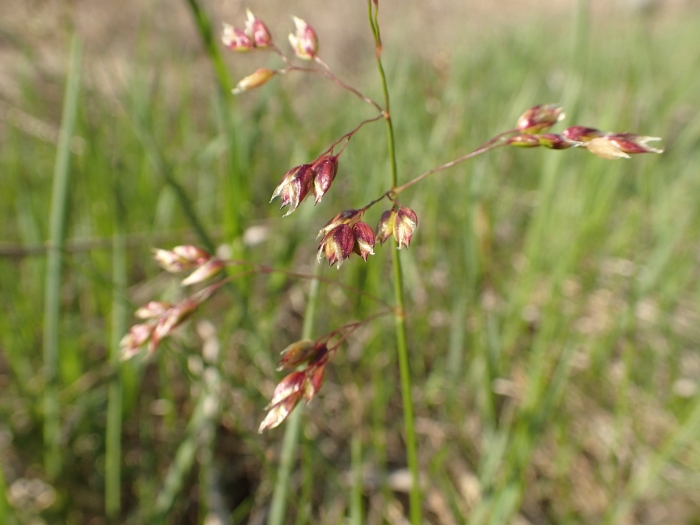Sweetgrass
(Anthoxanthum nitens)
Sweetgrass (Anthoxanthum nitens)
/
/

Allan Harris
Public Domain
Image By:
Allan Harris
Recorded By:
Copyright:
Public Domain
Copyright Notice:
Photo by: Allan Harris | License Type: Public Domain | License URL: http://creativecommons.org/publicdomain/zero/1.0/ | Rights Holder: Allan Harris | Publisher: iNaturalist | Date Created: 2019-05-29T17:08:56-07:00 |






































Estimated Native Range
Summary
Anthoxanthum nitens, commonly known as Sweetgrass or Holy Grass, is an evergreen perennial grass native to a variety of habitats including open woodlands, wetlands, riverbanks, and prairies in Northern Europe, Northern and Central Asia, and the Pacific Northwest. Sweetgrass is a hardy aromatic herb that can grow in harsh conditions, even as far north as the Arctic Circle. It has flexible leaves that grow to about 20 cm (7.9 in) in height before sprawling outward horizontally to lengths exceeding 100 cm (39 in) by late summer. The leaves may exhibit purple-red bases, which can indicate phosphorus-deficient soil conditions.
Sweetgrass is valued for its sweet vanilla-like scent, which is especially strong when dried and is used in basketry and as a natural air freshener. It is also considered sacred in many Native American cultures. The plant is often used in ornamental plantings for its fragrance and as a ground cover. It thrives in moist, well-drained soils and prefers full sun to partial shade. While it is drought-tolerant, Sweetgrass benefits from consistent moisture. The polyploid strain of Sweetgrass is a particularly vigorous grower and can be harvested multiple times per season. Propagation is typically done by division, as seeds are often not viable. When harvesting, it is important to cut the grass at the desired length during early to late summer, as plants harvested after the first frost may lose their scent.CC BY-SA 4.0
Sweetgrass is valued for its sweet vanilla-like scent, which is especially strong when dried and is used in basketry and as a natural air freshener. It is also considered sacred in many Native American cultures. The plant is often used in ornamental plantings for its fragrance and as a ground cover. It thrives in moist, well-drained soils and prefers full sun to partial shade. While it is drought-tolerant, Sweetgrass benefits from consistent moisture. The polyploid strain of Sweetgrass is a particularly vigorous grower and can be harvested multiple times per season. Propagation is typically done by division, as seeds are often not viable. When harvesting, it is important to cut the grass at the desired length during early to late summer, as plants harvested after the first frost may lose their scent.CC BY-SA 4.0
Plant Description
- Plant Type: Grass
- Height: 1-2 feet
- Width: 1.5-2 feet
- Growth Rate: Moderate
- Flower Color: N/A
- Flowering Season: Summer
- Leaf Retention: Evergreen
Growth Requirements
- Sun: Full Sun, Part Shade
- Water: Medium, High
- Drainage: Fast, Medium
Common Uses
Erosion Control, Fragrant, Low Maintenance, Water Garden
Natural Habitat
Open woodlands, wetlands, riverbanks, and prairies in Northern Europe, Northern and Central Asia, and the Pacific Northwest
Other Names
Common Names: Indian Grass, Sweet Grass, Vanilla Grass, Seneca Grass, Manna Grass, Holy Grass, Common Sweetgrass, Holygrass, Vanilla Sweetgrass, Duftmariengras
Scientific Names: , Hierochloe odorata, Hierochloë odorata, Hierochloe hirta, Anthoxanthum nitens, Anthoxanthum hirtum, Torresia odorata, Hierochloe nashii, Hierochloe odorata subsp. baltica, Anthoxanthum hirtum subsp. arcticum
GBIF Accepted Name: Anthoxanthum nitens (Weber) Y.Schouten & Veldkamp